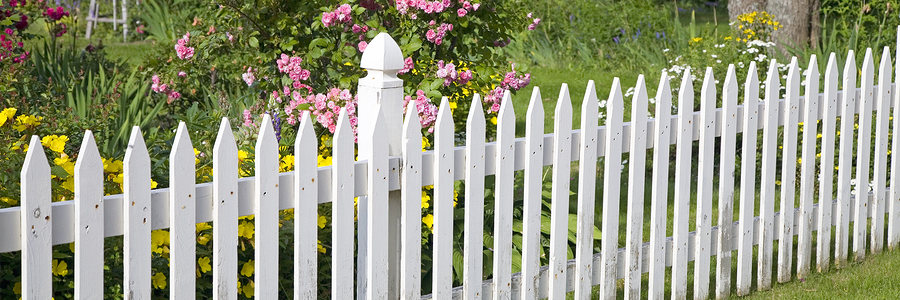American homeowners and Austin fence experts consider the white picket fence to be a symbol of success and accomplishment. The charm of a white picket fence evokes a yearning for what some believe to be a simpler colonial life. The picket fence has a history as old as America itself.
Where did the picket fence first appear?
The picket fence’s popularity dates back to the earliest parts of the Unites States’s colonial era. In the U.S., the picket fence first took hold while colonists were building settlements in North America. During the height of the picket fence’s popularity, those who owned homes were self-made and took great pride in the collection of items that showcased their wealth.
When the U.S. gained independence from Great Britain, the white picket fence kept its place as a symbol of class. The settler population continued to grow, causing the American frontier to push west. More people and families claimed land and began to work toward creating large homesteads.
The relative simplicity of picket fence construction meant that even working class Americans could gather the wood to create their own. Plentiful labor allowed those without woodworking skills to trade for pickets and support beams cheaply. Homeowners began constructing picket fences at homesteads across the frontier.
Emergence of the white picket fence
As the United States began to grow and housing construction shifted to a higher density, clear demarcation of property became a priority. Cities grew as health improved and crime dropped. Americans in neighborhoods needed a way to mark their property lines while caring for families that included children and pets.
The white picket fence was the answer. Cheap, white paint was bright enough to be seen day or night, and the arrangement of the pickets allowed children and animals to see outside the pickets while keeping them safe inside. The relatively short height of the fence did not block views toward the inside or outside, making it ideal for denser living spaces.
Increasing affordability of the white picket fence turned it into one of the most desirable types of fences for the growing American middle class. Homes across America were adorned with white pickets at the turn of the 20th century.
The white picket fence today
Modern homeowners opt more often for today’s inexpensive vinyl and chain link fences over white picket fences. However, they still hold an old-world charm that builders of new homes have started looking for in upper-middle-class houses.
Modern picket fences are constructed slightly differently than they were in the past. The process is as follows:
- Post-holes are dug for pickets
- Pickets are placed in the holes
- Concrete is poured to cement pickets in place
- Holes are filled
- Supports are placed
To increase the lifespan of picket fences, fence builders now use high-quality wood that increases the price of the fence. They require regular maintenance which includes repairing and replacing pickets as well as regular painting.
While its popularity may be on the decline, the white picket fence still holds enormous aesthetic value as a symbol of American hope.







